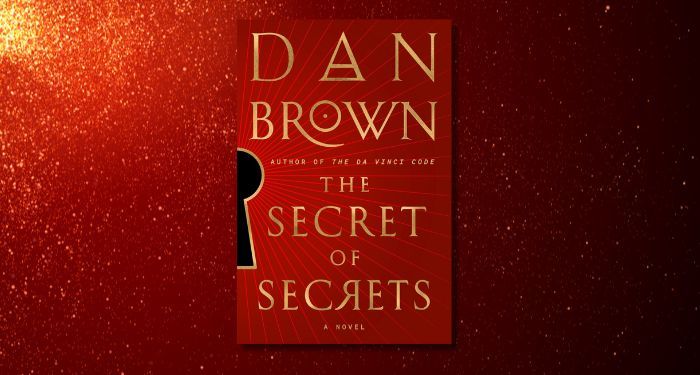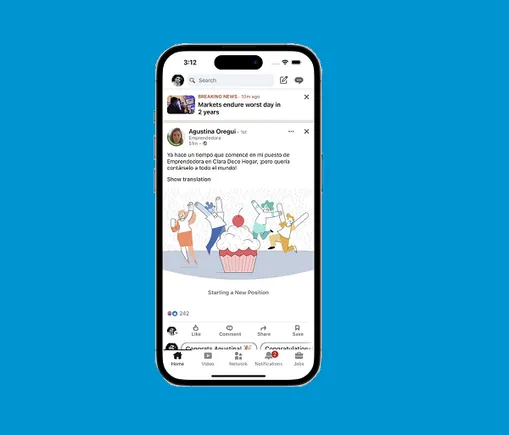Marketing isn’t about tactics, tricks or tools — it’s about having the right conversation with the right audience. Without a brand-first strategy, all your efforts are just noise. Here’s how to shift your approach, connect with ideal clients and drive real results.
Marketing without strategy is just noise
Marketing is not advertising. It’s not begging for leads or trying to trick people into buying. Marketing is a conversation. And that conversation only works if you know who you’re talking to and understand what they need to hear.
But marketers all too often prioritize tactics and tools that fail to deliver on empty promises: “If we do this tactic or use that tool, we will get all the necessary results.” This is a lie.
Tactical marketing without a strategy is like a dog chasing its tail. It’s a waste of time and resources. All you produce is more noise for people to ignore. Worse, you create noise that annoys your target audience, undermining your marketing efforts.
At the heart of strategic marketing is your brand. Your brand is who you are; it’s what you’re about. And it’s why your ideal clients want to talk to you.
If you continue with tactics and no strategy, you will continue shouting into the void, seeing no results or, even worse, flooding your inbox with inquiries that waste your time. All the while, you will never connect with your ideal client.
A brand-first strategy is the only way to move the needle and get your desired results. How do you do this? Follow these five steps and you will see the desired results.
1. Start with brand, not tactics
If you’re an established business with great products and services but fail to see returns, tactics like SEO, PPC and content marketing without strategy will get you nothing.
Your brand is the foundation for everything. To guide all your efforts, develop a strong brand voice and a bold brand promise to guide all your efforts.
How do you find your brand voice? Here are some exercises that will help you:
- SWOT analysis: Understand your strengths, weaknesses, opportunities and threats to uncover hidden truths you might have overlooked.
- Client interviews: Talk to your ideal clients. Ask them why they work with you and what they value about your organization.
- Employee interviews: Talk to your people, especially those who are client-facing. What are the clients concerned about? What keeps them up at night?
If you focus on these truths, you will no longer need to guess why your clients value you. These truths are the basis of your brand voice. It’s the reason you matter to your ideal clients.
Build on these and develop a brand promise that addresses your clients’ actual needs. Be bold with your brand promise. Tell them what they need to hear and promise them something that makes their lives easier. For example, our brand promise is…
- “We help 5-star service-based businesses rethink marketing and double their revenue in three years without wasting time and money.”
If you know your ideal client and what keeps them up at night, you will know what will motivate them to act. Stop guessing and know.
Dig deeper: Building a brand strategy: Essentials for long-term success
2. Eliminate ineffective busywork
Are your marketing efforts driving real business outcomes or just keeping you busy? Conduct a brutal assessment of your tactics:
- Does your social media generate ROI?
- Are your paid campaigns converting leads into closed business?
- Is your SEO ranking for keywords that align with your ideal audience’s intent?
It’s time to ask yourself, are the results from these tactics worth the effort? Be honest. Until you focus on the brand exercises above, how can you truly know if these tactics will connect with your target audience?
Tactics without strategic foundational backing are nothing more than guesswork. Focus only on efforts that contribute directly to meaningful growth.
Dig deeper: Strategic vs. tactical decisions: How to find the right balance
3. Return to your ‘why’
To connect with your ideal customers, you must understand what they truly value. Why did they hire you or buy from you? What problems did you solve for them? Your messaging, content and campaigns should address their “whys.”
Returning to the why forces you to focus on the customer. Why do you do what you do for them?
Consider the concept outlined in “Building a StoryBrand” by Donald Miller, inspired by Joseph Campbell’s The Hero’s Journey. The idea is to position your customers as the hero of the story, with your brand serving as the guide that leads them to success.
If your content is all about you, you’re doing it wrong. No one cares about you. They care about whether or not you will solve their problems. This is what it means to make them the hero of your story.
Show them how you will guide them to their success. Your content should outline how you will lead them to success. You will fail if all your content talks about how great you are.
This truth can be hard to accept for many. But think about this for a second: When was the last time you read something on a website about how great a company was and thought, “Wow, I must work with them? ” Never.
All you care about is whether or not someone can solve your problems. Your customers are no different.
Dig deeper: Why you should always ask why: Strategy must lead tactics in marketing planning
4. Redefine success metrics
Traditional metrics like traffic and impressions don’t always tell the whole story. Instead, prioritize:
- Quality website traffic that drives actions like downloads or meaningful inquiries.
- Rankings for keywords that reflect the right intent and attract ideal customers.
- Social media engagement that fosters real connections rather than automated noise.
- Ads leading to landing pages that drive conversion.
Your goals should always be tied to growth and revenue, even for brand awareness campaigns. Vanity metrics do not always mean marketing success. Yes, they can eventually translate to success, but it’s rare.
Instead, outline the goals that matter. Then, work backward from those goals to help you outline what a successful customer journey looks like.
- Does it end in a phone call?
- Or a form fill?
- How do they get there?
- What will lead them to this outcome?
Write your success story and map your marketing efforts to guide clients toward it. Don’t guess. Own the customer journey.
It’s time to make customer experience part of your marketing strategy.
5. Deliver exceptional customer experiences
It’s rare that customer experience factors into a conversation about marketing. But it is critical. Otherwise, you will struggle to understand what your ideal customer looks like and why they value you as a company.
Customer experience is where strategy truly comes to life. Use journey mapping to evaluate every touchpoint where customers interact with your brand.
For each touchpoint, ask:
- Are we delivering our brand promise?
- What are they thinking and feeling?
- Where can we exceed their expectations?
It can look something like this:
Remember, as mentioned in the first step, your customer-facing team is a goldmine of insights. Use their feedback to address gaps, fix frustrations and create a seamless experience.
Exceptional customer experiences naturally generate the loyal advocates that every company craves. These insights will help you generate the authentic content your ideal clients seek.
This means you will no longer need to guess what content you should create. You will know exactly what content they want and will motivate them to want more from you.
Dig deeper: From guesswork to growth: How to build a customer-centric marketing strategy
Shift your focus
Tactical marketing can drive traffic, but strategic marketing builds lasting connections and generates actual growth. Isn’t that the point of marketing?
Focusing on your brand, customer needs and meaningful results will create a marketing approach that stands out in a sea of sameness.
Everything else is just noise.
Contributing authors are invited to create content for MarTech and are chosen for their expertise and contribution to the martech community. Our contributors work under the oversight of the editorial staff and contributions are checked for quality and relevance to our readers. The opinions they express are their own.



































































